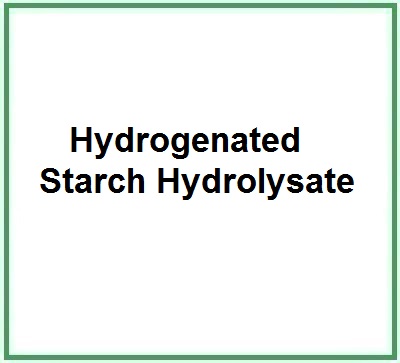Hydrogenated Starch Hydrolysate is a concentrated aqueous solution of sorbitol, maltitol, maltitriol and hydrogenated polysaccharides and is the baseline for the manufacturing of many cosmetic products, personal hygiene, confectionery. It is produced by a hydrogenation process from glucose syrup or glucose polymers.
The composition of Hydrogenated Starch Hydrolysate is:
- 5% water
- 95% (10% sobitol, 10% maltitol and the remainder are hydrogenated polysaccharides)
This compound was born in 1977 by Roquette, it was called Lycasin® 80/55 and was added in sweets.
It has a number of properties, including high viscosity, hydroscopicity, bonding capacity, anti-crystallization ability, low reactivity and is stable in all normal production conditions.
It is used in:
- Hard candies
- Soft candies
- Chewing gum
- Chocolate
- Bakery products
- Syrups
- Sauces
- Ice creams
- Drinks
In 1990 a study of diabetic and non-diabetic patients found some contraindications On Hydrogenated Starch Hydrolysate (1).
Other studies on dental plaque of this component, taken for a period of 3 months, have not found substantial changes in pH values (2).
Safety
It has been shown to be non-carogenic, non-acidogenic or hypoacidogenic in the telemetry of the pH of dental plaque (3).
Molecular Formula: C18H34O16
Molecular Weight: 506,454
CAS: 68425
Synonyms :
- Glucose syrup, hydrogenated
- Hydrogenated starch hydrolysate
- Syrups, hydrolyzed starch, hydrogenated
- Syrups, corn, hydrogenated
- EINECS 270-337-8
References_____________________
(1) Metabolic response to oral challenge of hydrogenated starch hydrolysate versus glucose in diabetes. Wheeler ML, Fineberg SE, Gibson R, Fineberg N. Diabetes Care. 1990 Jul
(2) Effects of 3 months frequent consumption of hydrogenated starch hydrolysate (Lycasin), maltitol, sorbitol and xylitol on human dental plaque. Birkhed D, Edwardsson S, Ahldén ML, Frostell G. Acta Odontol Scand. 1979
(3) Clinical caries studies with polyalcohols. A literature review. Imfeld TN. Schweiz Monatsschr Zahnmed. 1994
![]() Hydrogenated Starch Hydrolysate
Hydrogenated Starch Hydrolysate 

